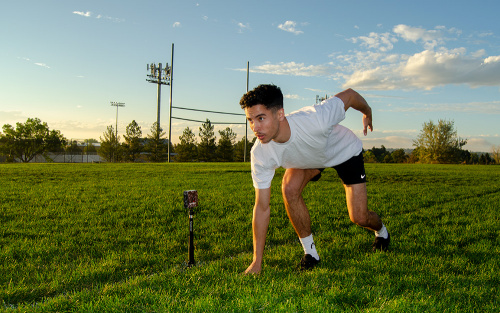Have you ever wanted to learn about wireless communication? Or want to replicate a product from a world-leading industry? In this Blog, you will get a sneak peak into ESP32 wireless communication and how it can be used to create a wireless timing device. Lets get started…
The standard “Combine” assessment is the gold standard for evaluating athlete performance throughout the NFL. The 2022 NFL Draft combine had over 55 million viewers around the world and the 40-yard dash times were amongst the top discussions.
There are two techniques for timing an athlete's 40-yard dash; hand timing, and fully automated electronic timing. As you probably know, hand timing consists of manually starting and stopping time as the athlete crosses the start and finish lines. Fully automated electronic timing methodologies are used to mitigate human error, whereby the actions of the athlete will start and stop the time. Typically, an athlete will have a “slower” 40-yard dash time if they are timed using a fully automated timing system. These electronic systems are extremely expensive costing the average Joe more than $600 for one system. Inspired by the significance of the 40-yard dash and its costly market, we set out to replicate this timing system using only SparkFun components.
SparkFun's Wireless Timing System
In our most recent tutorial, SparkFun provides step-by-step information for creating a wireless timing system using ESP wireless communication. Ready, set, go! As the user crosses the starting line, time will begin. When the user crosses the finish line their total elapsed time will be displayed on the OLED screen. Creating a project has never been so simple. Head on over for some great fun, while you enhance your engineering skills!









